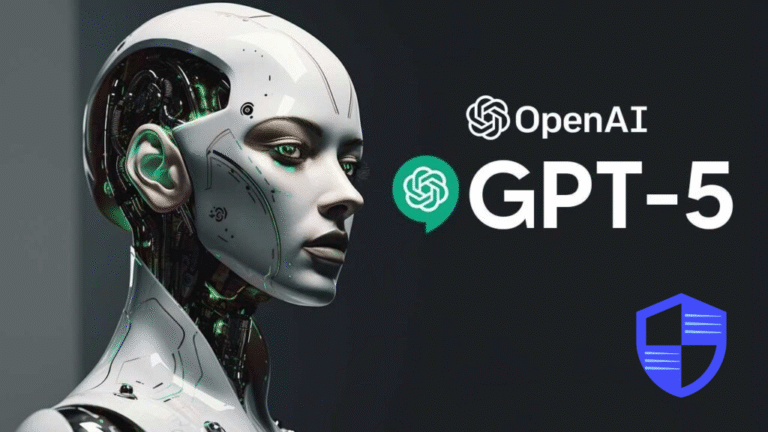Artificial Intelligence (AI) is Modifying the world in powerful ways. From voice assistants and chat-bots to medical diagnosis and autonomous driving, AI is reshaping industries and everyday life and Nature. At the heart of this innovation is OpenAI, a leading organization dedicated to building safe and beneficial artificial intelligence to everyone. This article explores OpenAI’s historical events, mission, innovations, real-world applications, pros and cons, and the ethical challenges it faces. We’ll also include a useful YouTube video for visual learners and Users.
Watch This Explainer Video on OpenAI:
The Origins of OpenAI
OpenAI was Created in December 2015 by tech entrepreneursas well as Elon Musk, Sam Altman, Greg Brockman, Ilya Sutskever, and others. Their mission was simple but ambitious: develop artificial general intelligence (AGI) that Satisfaction of all humanity.
It started as a non-profit research lab with $1 billion in funding pledges. The founders wanted to prevent powerful AI from being controlled by just a few corporations or governments. In 2019, OpenAI formed OpenAI LP—a “capped-profit” company that balances the need for investment with its ethical principles.
Mission and Philosophy
OpenAI aims to ensure AGI—machines that can learn and think like humans—serves everyone equally. Key principles include:
- Broadly distributed benefits
- Long-term safety of AGI systems
- Technical leadership and public cooperation
- Commitment to transparency and ethics
The capped-profit model means investors can earn profits only up to a certain limit, ensuring long-term ethical focus over short-term gain.
Major Technologies and Innovations
OpenAI has led the AI world with several groundbreaking tools:
GPT (Generative Pre-trained Transformer)
Elementary language dummy Like GPT-2, GPT-3, and GPT-4 are capable of generating essays, poetry, programming code, emails, and much more.
Codex
- AI that writes code based on user Required. It powers tools like GitHub Copilot, assisting programmers in real-time.
DALL·E
- Generates unique images from text descriptions (e.g., “a cat sitting on the moon wearing a hat”).
CLIP
- Connects images and text. It can understand what’s in a picture and generate related captions.
Whisper
- A multilingual speech recognition tool that can turn voice into text across many languages.
Real-World Applications
- OpenAI’s tools are used across multiple industries:
- Education: ChatGPT helps with tutoring, homework help, and language learning.
- Healthcare: AI supports faster diagnostics and medical research.
- Software Development: Codex helps write, debug, and explain code.
- Business: Automates customer support, marketing content, and data analysis.
- Design and Art: DALL·E allows users to generate visual art with simple text.
Pros and Cons of OpenAI
Pros
- Accessibility: Tools like ChatGPT and DALL·E are available to the public.
- Innovation: Regular updates and model improvements set industry standards.
- Productivity: Build Up speed and accuracy in writing, coding, and design.
- Educational Value: Simplifies complex topics and Elevate digital literacy.
Cons
- Bias: AI models can reflect biases in their training data.
- Privacy Risks: Improper usage may risk data leaks or misuse of sensitive information
- Over-reliance: Users may depend too much on AI for writing or critical thinking.
- Ethical Concerns: Potential misuse in disinformation, spam, or illegal content generation.
Ethics and Safety
OpenAI takes a responsible approach to AI development.
- Model alignment research: Ensures AI acts in line with human values.
- Content filtering: Prevents generation of harmful or inappropriate content.
- Human oversight: Uses human reviewers and feedback to improve safety.
- Global collaboration: Works with academic, industry, and government partners to promote safe development.
Challenges and Controversies
Despite OpenAI’s success, it faces several hurdles:
- Balancing openness with security
- Managing public expectations about AGI
- Ensuring fairness and reducing algorithmic bias
- Transparency in decision-making and content moderation
Some critics argue that OpenAI has become more closed since partnering with Microsoft, while others praise its attempts to combine openness with responsibility
OpenAI and the Future
OpenAI’s roadmap includes:
- Safer and smarter versions of GPT and Codex
- Research into more general and reliable AI systems
- Better tools for education, healthcare, and creativity
- Transparent policies to guide ethical AI adoption
- AGI remains a long-term goal, but OpenAI is taking deliberate, careful steps toward that vision.
Conclusion
OpenAI is one of the most useful influential players in the world of AI. Through its cutting-edge tools like ChatGPT, Codex, and DALL·E, it has opened the doors for people to work smarter, learn faster, and create more freely and Safe our time . While challenges around safety and ethics remain, OpenAI’s commitment to responsible innovation makes it a key force in shaping the future of technology.
As artificial intelligence becomes more integrated into our lives, understanding OpenAI’s mission, tools, and direction is more important than ever. Whether you’re a student, a business owner, or just curious about technology, OpenAI is a name to know and watch and learn this how to use in our this article.

